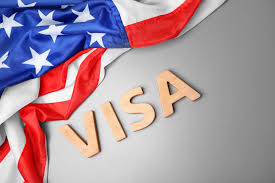How Long Does It Take to Get an EB-3 Visa as an International Nurse to the USA?
5/27/20243 min read


Understanding the EB-3 Visa Process
The EB-3 visa is a category of employment-based immigration that facilitates the entry of skilled workers, professionals, and other workers into the United States. For international nurses seeking to practice in the U.S., the EB-3 visa is a crucial pathway. This visa allows foreign nationals to work permanently in the U.S. upon meeting specific eligibility criteria and successfully navigating the application process.
Under the EB-3 visa, there are three primary subcategories:
1. Skilled Workers: This category is for individuals with at least two years of job experience or training. Nurses typically fall under this category due to the specialized skills and training required for their profession.
2. Professionals: This category is designated for individuals with a U.S. bachelor's degree or its foreign equivalent, and the job must require such a degree. Many nurses also qualify under this subcategory, given the educational standards often required in nursing.
3. Other Workers: This category is for individuals performing unskilled labor that requires less than two years of training or experience. This subcategory is generally less applicable to nurses.
To be eligible for the EB-3 visa, international nurses must meet several criteria. These include possessing the necessary educational qualifications and licensure, securing a job offer from a U.S. employer, and obtaining an approved labor certification from the Department of Labor. The labor certification verifies that there are no qualified U.S. workers available for the position, and hiring a foreign nurse will not negatively impact the wages and working conditions of U.S. workers.
The initial steps in the EB-3 visa application process are critical and involve meticulous preparation. Applicants must gather all necessary documentation, such as educational transcripts, professional licenses, and proof of job offers. Completing the appropriate forms, such as the Petition for Alien Worker (Form I-140), and submitting them accurately and comprehensively is paramount. Ensuring all information is correct and complete can significantly reduce the risk of delays or denials in the application process.
Obtaining an EB-3 visa as an international nurse to the USA typically involves a multifaceted process that spans one to three years. The timeline can vary significantly depending on several factors, but understanding the key stages can help applicants manage their expectations and plan accordingly.
Labor Certification
The first crucial step is acquiring labor certification through the Department of Labor (DOL). This process, known as Program Electronic Review Management (PERM), involves the employer demonstrating that there are no qualified U.S. workers available for the position. The average processing time for labor certification can range from six months to over a year, depending on factors such as the employer's recruitment efforts and the current workload of the DOL.
I-140 Petition Approval
Once labor certification is obtained, the employer must file Form I-140, Immigrant Petition for Alien Worker, with the United States Citizenship and Immigration Services (USCIS). The processing time for I-140 petitions can vary but generally takes between six to nine months. Premium processing is available for an additional fee, which can expedite the process to approximately 15 calendar days.
Waiting for a Visa Number
After the I-140 petition is approved, the applicant must wait for a visa number to become available. This waiting period can be influenced by the applicant's country of origin, as some countries have higher demand and longer backlogs. The U.S. Department of State's Visa Bulletin, updated monthly, provides information on visa availability and priority dates for different countries and categories. Countries with higher volumes of applicants, such as India and the Philippines, may experience longer wait times.
Factors Influencing the Duration
Several factors can affect the overall duration of obtaining an EB-3 visa. Delays in labor certification, issues with documentation, or complications with employer sponsorship can extend the timeline. Additionally, changes in immigration policies and processing priorities can impact the speed at which applications are reviewed and approved.
Tips for Expediting the Process
To expedite the process, applicants and employers should ensure timely and accurate submission of all required documents. Staying informed about changes in immigration policies and procedures is also crucial to avoid unexpected delays. Utilizing premium processing for the I-140 petition, when available, can significantly reduce waiting times.
By understanding the various stages and factors involved, international nurses can better navigate the EB-3 visa process and work towards achieving their goal of working in the United States.
Empowerment!
Helping international nurses pursue their American dream through Recruitment. Top-notch Resume. NCLEX Materials.
Contact
For more information, connect with us by filling the form and hit submit.
© 2024. All rights reserved.
Privacy
Your privacy is of the utmost importance to us, and we are committed to ensuring that your data is securely stored and used only for the intended purposes.
By providing your information through our forms, you can trust that we will handle it with the highest level of care and confidentiality. We value the trust you place in us and strive to maintain the highest standards of privacy and security for all our users.
